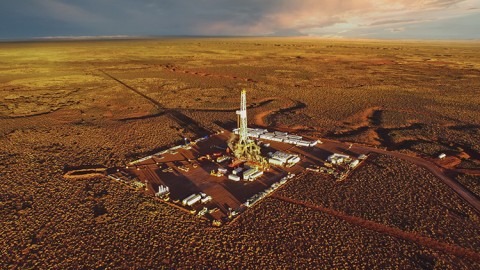When it comes to the oil and gas industry, there are always new and innovative ways to enhance output and efficiency. In the end, production optimization increases asset value by reducing expenses and increasing operational efficiency. Enhancement techniques improve well production by reducing a wide range of operational obstacles.
Nevertheless, production optimization may be defined as “production control” in which the production of gas, oil, and perhaps water is targeted, maximized, or minimized. For instance, it is simple to target or maximize the generation of gas and/or oil while reducing the amount of water, or to run the gas-oil ratio (GOR) and oil production to predetermined levels in order to save reservoir energy. A plethora of substitute production goals exist. Because every well, platform, and field is unique, there is a flexible way to manage production.
General Overview
First of all, how to sustain and grow output in current fields is a recurring challenge for oil and gas businesses. Oil and gas resources that are mature naturally deteriorate over time. Conventional production optimization approaches for modelling, simulation, and analysis take a lot of time and are frequently erroneous. In oilfields with reservoirs that are physically complicated, the issue is very severe. For all upstream production and service firms, choosing the best operating settings for artificial lift systems and other equipment is a challenging task.
Upping the Ante
There are many production optimization techniques that could be implemented to achieve an enhanced overall output. For instance, emulsion treatment is an essential method used to enhance efficiency; this includes choosing from a variety of demulsifier treatments to lower equipment and storage requirements, increase vessel efficiency, reduce the generation of skim oil, and lower overall facility expenses.
Additionally, well stimulation treatments go way back and remain a popular method in ameliorating processes. As a matter of fact, well stimulation treatments are a tried-and-true method to lessen production decreases and wellbore skin damage caused by paraffin, scale, and asphaltene deposition.
Moreover, chemical automation services are among the more underrated techniques, despite providing excellent results. In fact, it is beneficial in reducing chemical waste and site visits by implementing automated chemical treatments that provide a precise dose independent of well conditions.
Oil and gas companies should constantly persist and strive to create an optimization procedure that increases production rates and reduces operational expenses through a series of enhancement techniques.
Thus, with significant global advancements in the use of clean technology, the shift away from fossil fuels and towards renewable energy sources is gathering steam. Even with the present success, faster growth is needed, and global leaders in industry and government will be crucial in determining the pace as a result of pressure from sustainability targets and improvement needed by the government.
However, substantial growth is constrained by lethargic infrastructure development, inadequate investment in new technologies, and subpar grid optimization. While international cooperation is important, the current state of world tensions and conflicts has proven to be a hindrance. Similar to the US-China trade spat, these tensions have accelerated the transition to renewable energy, but they have also broken up global supply chains, which may be bad for advances in clean technology. As said by an Energy Efficiency Expert, “The trick is not to rush too fast and only have renewable energy and say that [oil and gas products] are bad and harmful, but we should try and reduce risk while at the same time improving [the industry].
Finally, it is worth noting that significant distortions in the global energy markets are caused by inefficient subsidies for the use of fossil fuels. These subsidies give an unfair advantage for the switch to clean energy technology, promote the wasteful and excessive use of fossil fuels, and produce imprecise price signals for fuel efficiency.
The immediate financial impact of these subsidies is significant, but the effects on the environment and human health are far more significant. To level the playing field, reorient market dynamics towards sustainable energy usage, and ease the transition for economies and consumers used to subsidized energy costs, a planned and progressive phase-out should be put into place.








